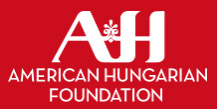William Penn Life, 2011 (46. évfolyam, 1-12. szám)
2011-02-01 / 2. szám
Tibor's Take H Consider & Discuss Last month (January 2010 issue), I gave to you, the readers of William Penn Life, a self-inventory survey on being a “good Hungarian.” Did you enjoy the questionnaire? How did you do? Did you give the evaluation to any other loved ones that are Hungarian? How good of a Hungarian are you? taurants and attended countless picnics and affairs sponsored by Magyar organizations, such as the Youngstown American-Hungarian Club, the Northeast Ohio Hungarian Cultural Center based in Hiram, Ohio, and, of course William Penn Association. As a youngster, I remember visiting the Cultural center, playing on the cool swingset and getting locked up in the "jail" during their Szüreti Bál. But, through the years, as my brother played the cimbalom at the annual commemoration of the 1848 Revolution or as my family attended the Easter basket blessing at St. Stephen of Hungary in Youngstown, I saw an alarming trend. The number of attendees was decreasing each year. As my siblings and I got a bit older, we would volunteer our services to these various organizations and churches. We usually did the hard laborious tasks in the kitchen or helped with cleaning up. In just a few years, we saw several /iurkß-making activities come to an end. The St. Stephen's Holy Name Society stopped making their Magyar specialty a few years ago, and for the first time, the Youngstown Hungarian Club will not be making their mid-winter blend of pork and rice this year. (We hope hurka főnök Frank Tobias is on the road to recovery so that production can resume next year!) My concern with Perspective #2 is that in my two decades of life, I have seen many good, hard-working members of these Hungarian groups become too frail to continue the arduous tasks of putting on events or the making these labor intensive foods. As a community, we do not have the shark's tooth ability to replace a worker with a younger, more physically able one. Most American-Hungarians born in the last third of the century couldn't care less about the customs, rituals and traditions brought over to America from Hungary. This past Dec. 18, my brother Endre II brought his 1894 Schunda cimbalom to the fabulous Hungarian Heritage Society Museum housed in the Galleria at Erieview, in the heart of downtown Cleveland. The Society's volunteers, under the direction of Andrea Mészáros, held a seminar for school age children. The theme centered on Hungarian Christmas traditions. About 25 youngsters were in attendance. All were enthusiastic in wanting to learn Hungarian Style. There were several hands-on projects taking place simultaneously. My brother was but a small part of this event. He played a short Christmas concert and then taught several children how to play "Pásztorok, Pásztorok" on the cimbalom. The entire event culminated with a demonstration of how young men in the villages of Hungary go door-to-door singing to the children the story Jesus and Christmas. The actors were dressed like shepherds and, of course, Mikulás. The entire event was beautiful and made me proud to be a Magyar. Attendees for this occasion came from as far away as 60 miles. With the price of gas, can we continue to travel long distances to get a taste of our heritage? Perspective #3 (2011-2086): The Future Earlier in this commentary, I mentioned Árpádhon. It's story is about an isolated community of Hungarian immigrants that started out by logging. Once the trees were cleared, the company left. Fortunately, these enterprising individuals were able to purchase the land cheaply and found that strawberries grew exceptionally well there. In the community's prime, more than 1,000 Magyars lived and worked there. Hungarian churches, clubs, schools and businesses abounded there. Over the next 90 years or so, the population of Magyar-Americans slowly dropped to slightly more than 100. Is this a prime example of what will become of William Penn Association and the Hungarian strongholds here in America? Árpádhon did not benefit from the influxes of Hungarian immigrants in 1948 and 1956. Most other Hungarian communities in America did get new blood so to speak. I have mentioned in previous "Takes" Jim Balog, Frank Soos, Mr. and Mrs. Kalman Molnár and others. All arrived in America during the late 1940's and 1950's, and all became integral parts of our respective Magyar- American communities. Without a new influx of young Hungarians, I see a continued decline in our Hungarian communities. / Éljen a Magyar! Tibor II Tibor Check Jr. is a member of Branch 28 Youngstown, Ohio, and a student at Cleveland State University. He serves as host of the “Souvenirs of Hungary” weekly radio show broadcast on WKTL-90.7 FM in Struthers, Ohio. Let's hear your take Let me know how you enjoy my thoughts and views on growing up Hungarian Style. If you have any questions or comments about me or my column, please email me at: SilverKingl937@yahoo.com, or drop me a letter in care of the William Penn Association, 709 Brighton Road, Pittsburgh, PA 15233. William Penn Life 0 February 2011 0 9
